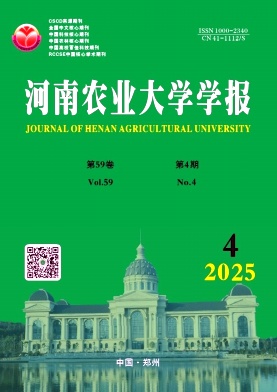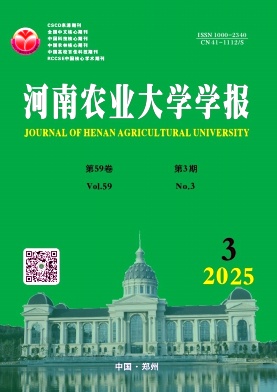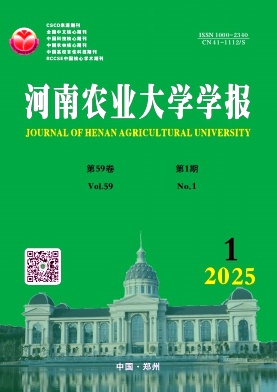Tracking the information about your manuscript
Communicate with the editorial office
Query manuscript payment status Editor LoginCollecting, editing, reviewing and other affairs offices
Managing manuscripts
Managing author information and external review Expert Information Reviewer LoginOnline Review
Online Communication with the Editorial Department
Download
Declaration
1. There have been incidents of fraudulent individuals using fake websites to deceive authors into submitting manuscripts, as well as contacting authors under the guise of our editorial office and its staff. This has caused significant harm to our journal's reputation. Authors are strongly urged to remain vigilant. We have reported these activities to the police and reserve the right to pursue legal action against such individuals. We would like to emphasize that our journal does not collaborate with any agencies or individuals to publish articles for a fee. We do not accept email submissions. The official website of our editorial office is: https://qkzx.henau.edu.cn/, and the manuscript submission site is https://nnxb.cbpt.cnki.net/. Please be aware to avoid being deceived.
2. Recently, some fraudsters have been impersonating our editorial office and sending emails to authors by sending letters to authors through email addresses such as qilinshou0713@163.com and 13643188379@163.com to extort various fees under various names such as random review of publication quality and download of proofs. Please note that the correct email address for our journal is hnndxb@henau.edu.cn.
3. Our journal currently does not charge any review fees. However, we do charge a publication fee, which is required to be paid within one week of the receipt of relevant notification. If payment is not made on time, the publication of the article may be delayed or canceled. Authors not affiliated with Henan Agricultural University should pay via bank transfer, while internal transfers should be used by authors from our university.
4. Bank transfer details (Both institutional and personal transfers can be made to this account):
Account Name: Henan Agricultural University
Account Number: 1600 3101 0400 06945
Bank: Agricultural Bank of China, Zhengzhou Shangdu Branch
Bank Code: 103491000317
Please include the note "Author's Name + Publication Fee for Journal of Henan Agricultural University" when making the transfer, and promptly notify us of the transfer time via email to facilitate account verification.
5. Our journal has never collaborated with any agencies. Please do not fall victim to scams.
6. Once a manuscript is accepted, it will be eligible for online first publication. However, authors must ensure that the title, authorship and order, affiliations, and other information remain unchanged. Any issues or liabilities arising from changes after online first publication will be the responsibility of the authors.
Journal Introduction
Journal of Henan Agricultural University is committed to the principles of rigor, pragmatism, innovation and growth. It aims to promote agricultural science and technology and contribute to the development of related disciplines. The journal participates in the progress of the university, academic disciplines, scientific growth and achievements of researchers. The journal primarily publishes articles in the fields of crop science, veterinary medicine, agricultural engineering, forestry, animal husbandry, agricultural and forestry economics and management, biology, agricultural resources and environment, food science and engineering, landscape architecture, ecology, plant protection, horticulture, and tobacco science. Manuscripts are expected to demonstrate scientific rigor, originality, authenticity, and adherence to academic standards.
The journal is currently included in many international databases, including the Chemical Abstracts (US), Japan Science & Technology Agency Database, databases of CABI (UK), and EuroPub. It has been indexed in A Guide to the Core Journals of China (2023 edition) and selected as a Key Source Journal for Chinese Science Citation Database (CSCD) (2025-2026), a Key Magazine of China Technology (Source Journal for Chinese Scientific and Technical Papers and Citations), a China Core Academic Journal by Research Center for Chinese Science Evaluation (RCCSE), a Core Journal of Agriculture and Forestry in China (Class A), and a High-quality Scientific Journal in the Field of Agriculture and Forestry by China Association for Science and Technology. In addition, the journal has received numerous awards, including National Excellent Scientific Journal, Double-Effect Journal of China Scientific Journal Phalanx, Outstanding Natural Science Journal of Chinese Higher Education Institutions, Excellent Scientific Journal of Chinese Universities, Demonstration Case of Excellent Scientific Journal Construction in Chinese Universities, Premium Journal of Chinese Agricultural Journals, Outstanding Team of Chinese Agricultural Journals, Most Influential Agricultural Journal in China, Henan Excellent Publication Award, Outstanding Scientific Journal of Henan Province, Excellent University Journal of Henan Province, and First-Class Journal of Henan Province.
Research progress of machine learning-improved convolutional neural network in crop disease recognition
WANG Qiang;LI Meilin;MA Xinming;QIAO Hongbo;GUO Wei;SHI Lei;XIONG Shuping;FAN Zehua;ZHENG Guang;This review summarizes the integrated improvement methods for crop disease identification, evolving from machine learning to convolutional neural network(CNN). It systematically outlines the key technologies involved in both machine learning and CNN-based crop disease indentification, including six major application processes: data acquisition, data preprocessing, model training, network architecture selection, feature extraction and fusion, and model validation. The core reasons for the performance differences between the two methods are analyzed, and the shared technical challenges(such as high data requirements, high computational demands, and limited generalization capability) are identified. Corresponding strategies for using machine learning to enhance CNN-based crop disease identification are also summarized. Finally, the review highlights current research challenges and discusses potential future research directions.
Research progress of EXPA and EXPB in plant growth and development and stress response
ZHANG Lijuan;ZUO Chuanshun;GAO Kexiao;YAN Pengtao;YANG Hao;By analyzing the structure and creep characteristics of the expansin family:α-Expansin(EXPA) and β-Expansin(EXPB), the research progress of EXPA and EXPB in plant growth and development and stress response was comprehensively reviewed. The key roles of EXPA and EXPB in seed germination, grain development, pollen tube growth and stress response were discussed. Combined with the latest achievements in genomics and proteomics, this review looks forward to the application potential of expansins in crop stress resistance improvement and yield improvement, as well as their importance in crop improvement and agricultural production.
Research progress of short interspersed nuclear elements (SINE) in plant genomes
MENG Haijun;LI Jing;ZHOU Ranran;HU Qingxia;This paper introduced the characteristics and functions of three fundamental structures that constituted short interspersed nuclear elements(SINE) in plant genomes, summarized and compared the methods for plant SINE identification, family assignment and genome annotation, clarified interspecies distribution characteristics of plant SINEs and their underlying mechanisms, as well as the associations between plant SINE and genes, analyzed the estimation methods and principles for the relative age and transpositional activity of plant SINE families, the formation models of novel plant SINE families, and their impacts on gene evolution and expression. Finally, it explored the application prospects of SINE research in crop breeding.
Characteristics analysis and QTL mapping of early leaf senescence traits of maize inbred line ldhs1
MA Miaomiao;ZHANG Qifan;ZHENG Binrui;ZHANG Yazhou;ZHANG Lihua;LI Xingxing;LIU Zonghua;SONG Yunyun;LI Haochuan;【Objective】This research was conducted to reveal the characteristics and genetic basis of maize leaf senescence and lay the groundwork for enhancing the genetic pool and guiding the breeding programs to improve or create new plant strains. 【Method】An inbred line named ldhs1 was obtained from the DH lines created by maize haploid breeding technology. Observations of physical traits, measurements of physiological and biochemical properties, and examinations of tissue and cellular structures were conducted, and the genes related to early leaf senescence in maize were located by using forward genetics and bulked segregant analysis sequencing(BSA-seq). 【Result】Compared with the normal stay-green inbred line L521, the ldhs1 exhibited top-down early senescence from the 10 th day after pollination, and gradually spread from leaf edge yellowing to the interior to the whole leaf yellowing. The leaves showed a reduction in vital chlorophyll levels and the activities of SOD and POD, coupled with heightened MDA content, which in turn negatively impacted the efficiency of photosynthesis and led to chloroplast dysplasia. Based on genetic analysis and BSA-seq, the maize early leaf senescence gene LDHS1 was located in a region of 1. 06 Mb between molecular marker indel-12 and indel-13 of chromosome 1. 【Conclusion】A novel inbred line with early leaf senescence from top to bottom was discovered, and the quantitative trait locus,(QTL) mapping of this trait was carried out and the related candidate genes were branded.
Online First
Analysis of the efficiency of agricultural machinery purchase subsidy policy in different geomorphic regions of China
The impact of digital and intelligent transformation on the new quality productivity of agricultural enterprises
The policy effect of environmental regulations on the green innovation of agricultural enterprises
Optimization and applicability study of the YOLO algorithm for tobacco leaf curing stage discrimination
Detection method of corn bell mouth based on improved Yolov5s
more..Journal Information

Journal of Henan Agricultural University
(Bimonthly, founded in 1960)
Governing Body: Henan Agricultural University
Sponsor: Henan Agricultural University
Publisher: Editorial Office of Journal of Henan Agricultural University
(No. 218, Ping'an Avenue, Zhengdong New District, Zhengzhou, China)
Postal Code: 450046
Tel: +86-371-56552551
E-mail: hnndxb@henau.edu.cn
Editor-in-Chief: ZHOU Wei
Subscription Office: Post offices nationwide
Postal Distribution Code: 36-132
Domestic Distribution: Zhengzhou Postal Bureau
International Distribution: China National Publishing Industry Trading Corporation (P.O. Box 782, Beijing)
ISSN: 1000-2340
CN: 41-1112/S
WeChat Official Account: hnndxb1985
QR Code:























































































































































































































































